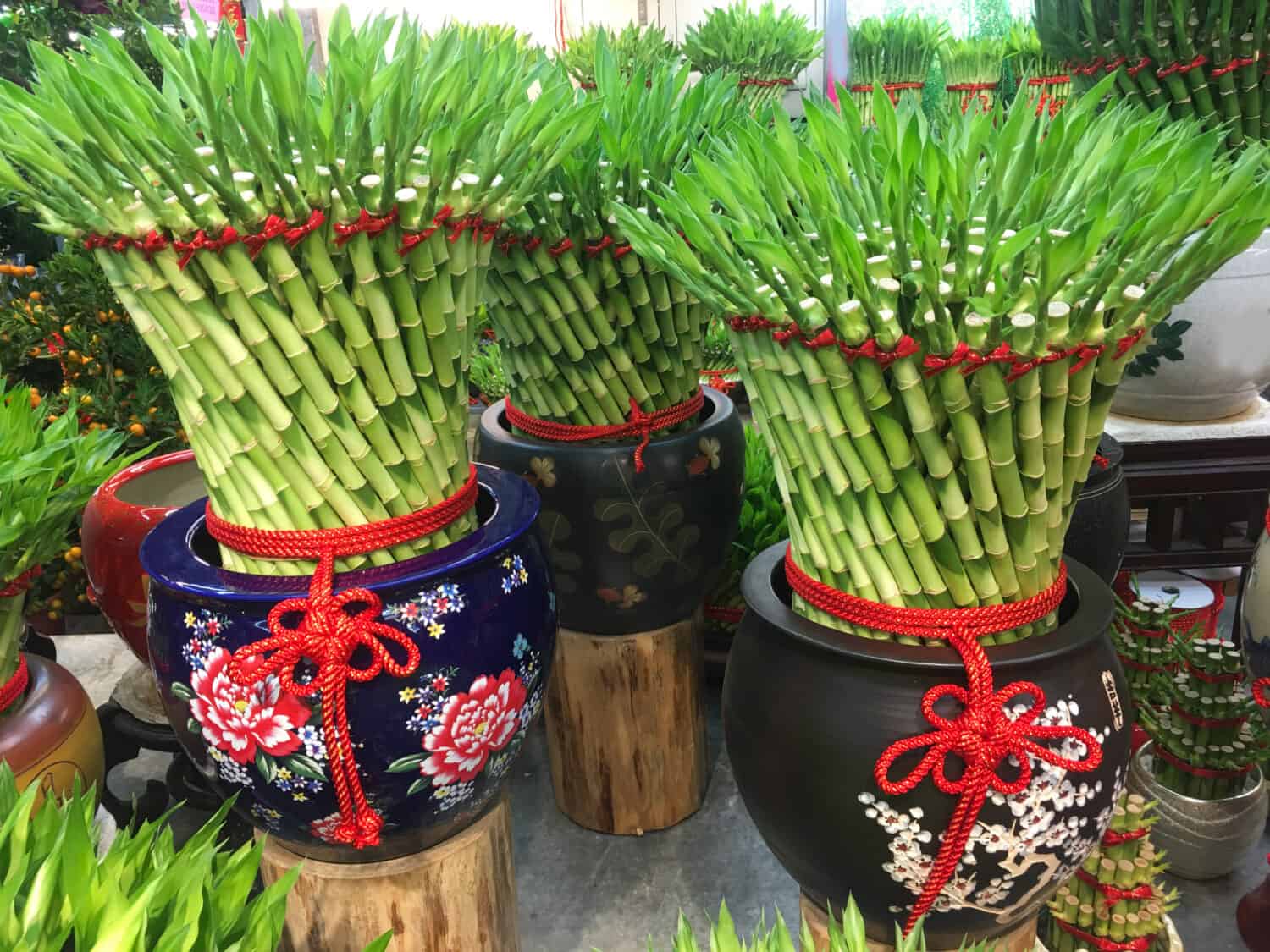Welcome to our blog post on bamboo symbolism, where we delve into the captivating world of its meanings, symbolism, and long history. Join us as we explore the significance this versatile plant holds in various cultures and discover the fascinating stories behind its enduring legacy.
How the Color of Bamboo Impacts Its Symbolism
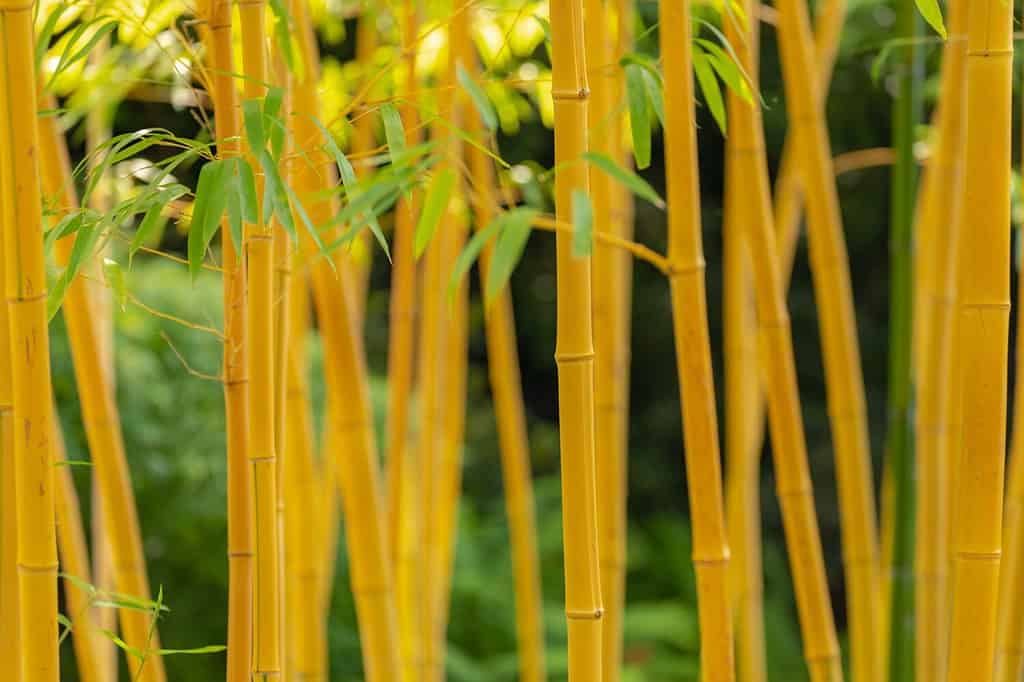
Yellow bamboo symbolizes joy.
©Wut_Moppie/Shutterstock.com
The color of bamboo has a significant impact on its symbolism. In Chinese culture, green bamboo symbolizes resilience and strength, while yellow bamboo symbolizes joy. White bamboo is a symbol of mourning and death, and black bamboo symbolizes misfortune. In Buddhist symbolism, green bamboo symbolizes the path to enlightenment and the capacity to overcome obstacles, while black bamboo often symbolizes the darkness that can shroud a person from the truth. Red bamboo often symbolizes good luck in Chinese culture, while in Japan, red bamboo stands for the values of bravery and courage. Finally, silver bamboo represents prosperity and wealth in Chinese culture.
The Ways in Which Bamboo Is Used in Traditional Medicine
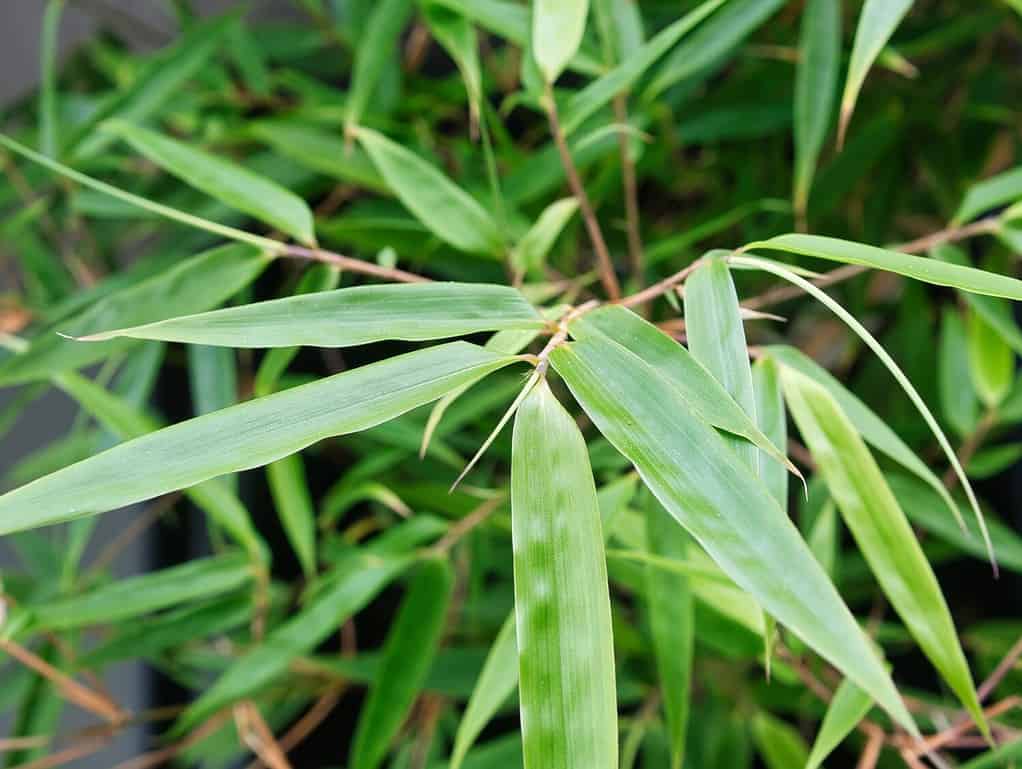
People use the leaves of bamboo to treat fever in Chinese medicine.
©Maurice Lesca/Shutterstock.com
In addition to bamboo symbolism, it has been an integral part of traditional Chinese medicine for centuries. Some people believe it has antibacterial, antifungal, antiviral, and antioxidant properties, as well as soothing and calming effects. Some people use bamboo to treat respiratory illnesses and gastrointestinal disorders such as diarrhea. It may also be used to treat skin ailments, such as eczema, psoriasis, and acne.
Additionally, practitioners use it to reduce inflammation, treat urinary tract infections, reduce fever, and improve circulation. Some people believe bamboo provides a boost to the immune system and promotes overall health. In addition to these medicinal applications, people use bamboo as a detoxifying agent and for its ability to cleanse the body of toxins. Finally, some people believe that bamboo improves mental clarity and focus, as well as reduces stress and anxiety. All in all, bamboo has been an invaluable part of traditional Chinese medicine for centuries and continues to play an important role in the health and wellness of modern society.
The Spiritual Significance of Different Types of Bamboo
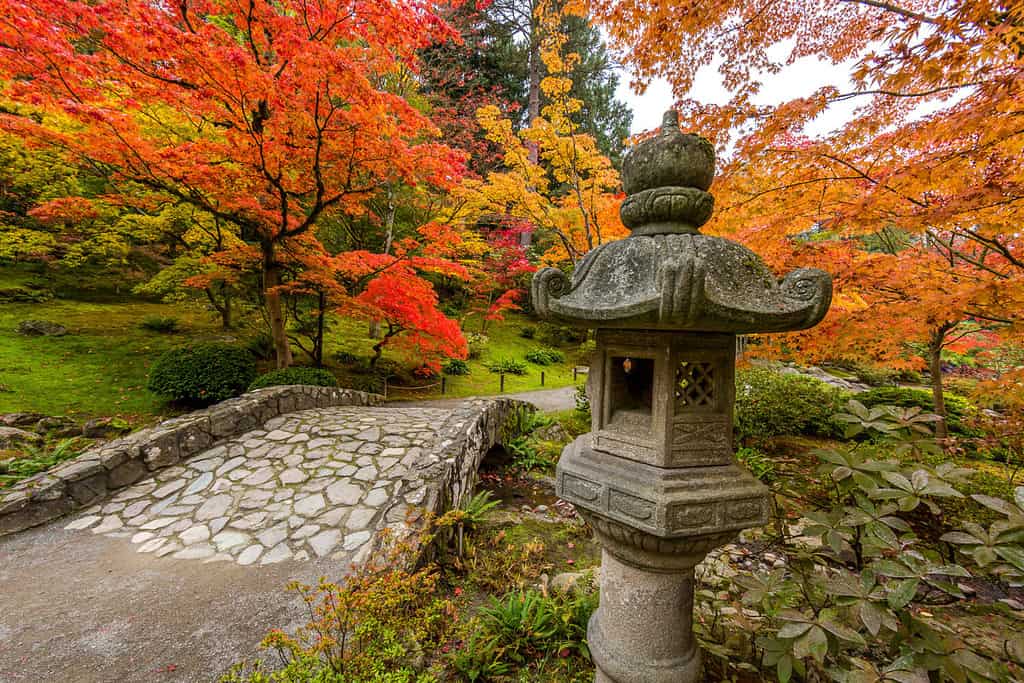
This Japanese garden features multiple bamboo species, including Phyllostachys nigra (black bamboo) and Fargesia nitida.
©Roman Khomlyak/Shutterstock.com
Bamboo has been a symbol of spiritual significance for thousands of years. In Asian cultures, various types of bamboo are seen as symbols of strength, resilience, and peace. For instance, the Chinese believe that bamboo represents luck and prosperity, while the Japanese consider it a symbol of harmony.
In Hinduism, bamboo is a symbol of purity and longevity. Hindus often place bamboo stalks in their homes to ward off evil spirits and bring good fortune. In Buddhism, bamboo is a symbol of purification and cleansing, as it is a plant that easily adapts and grows in any environment.
If you read Chinese folktales, bamboo is a representation of wisdom and courage. In some stories, bamboo’s hollow center symbolizes inner peace and emptiness. In addition, bamboo stands for the idea of protection, as you can fill its hollow core with water to ward off evil spirits.
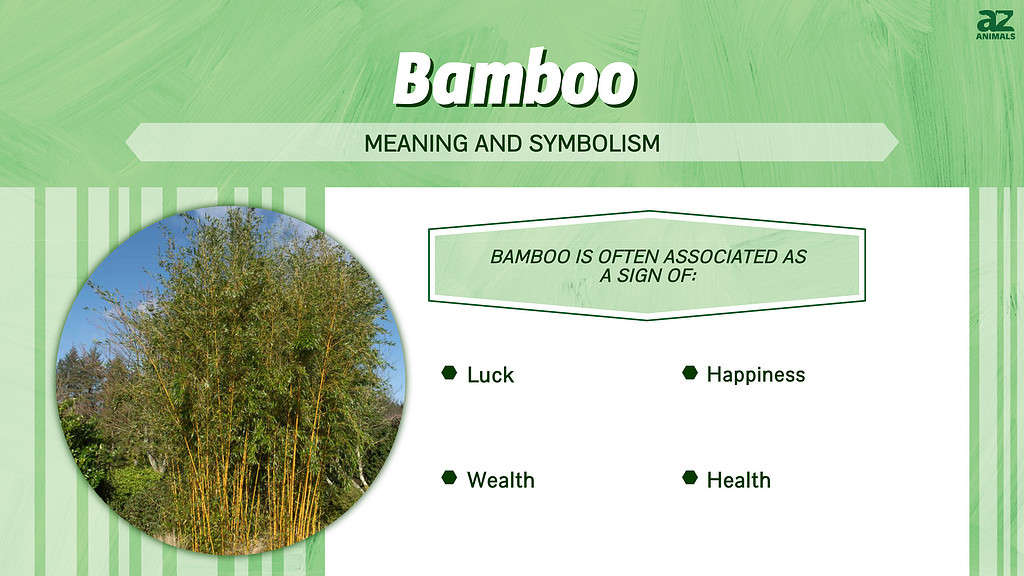
Bamboo’s Role in the Natural Environment and Sustainability
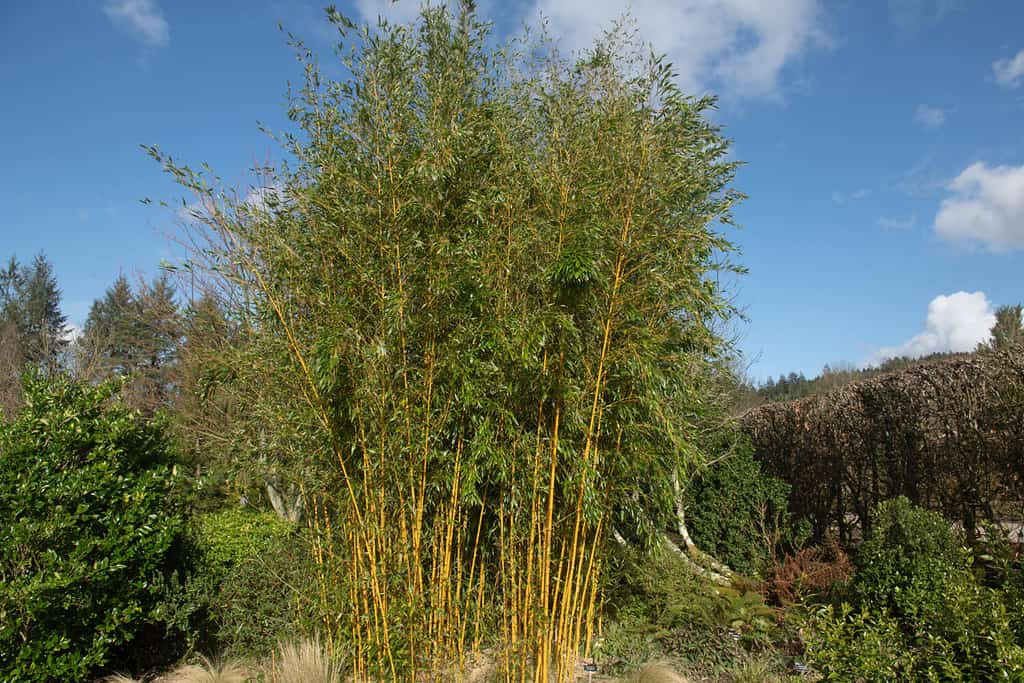
Because of its incredible height and strength, bamboo is a great construction material.
©Peter Turner Photography/Shutterstock.com
Bamboo plays an important role in the natural environment and sustainability. Its fast-growing nature and hardy structure make it a great resource for renewable energy and materials. People use bamboo to construct homes and buildings, and its woody fibers provide an excellent source of biomass for renewable energy. Bamboo absorbs carbon dioxide from the atmosphere and releases oxygen, making it a great tool for mitigating climate change. On top of that, its roots help to prevent soil erosion and provide habitats for many species of wildlife. All of these factors make bamboo an invaluable resource when it comes to sustaining the natural environment.
Historical Uses of Bamboo and Its Evolution Over Time
People have used bamboo for centuries in many parts of the world, primarily for its strength and flexibility. In Asia, builders used bamboo to construct buildings, bridges, and even ships. In Africa, they used it to make weapons and tools. Native Americans used bamboo for arrow shafts and other fishing and hunting gear.
Today, people still love bamboo for a wide variety of products, from clothing and bedding to furniture and flooring. Its unique properties make it an ideal material for a variety of applications. It is lightweight, strong, and has excellent thermal and acoustic insulation.
In recent years, bamboo has become increasingly popular as an eco-friendly alternative to traditional materials, such as wood and plastic. It is renewable, requires less water and energy to produce, and is biodegradable. It also produces more oxygen than trees, making it an attractive option for those looking to reduce their carbon footprint.
Bamboo Symbolism — Folklore Surrounding Bamboo
Bamboo has always been a part of cultural folklore, with many stories and legends surrounding its strength and resilience. This has resulted in a strong cultural connection to bamboo, with it being used for various purposes and incorporated into many different aspects of culture.
In many Asian countries, people craft bamboo into traditional instruments such as flutes and xylophones. They also use it to create furniture, sculptures, and even woven baskets. The strength and durability of bamboo make it a great material for a variety of purposes.
In some countries, people use bamboo to create intricate works of art. Bamboo carving is a popular form of art, with intricate designs and patterns being carved into the wood. Many people believe that this art form brings good luck and fortune and give it as a gift for special occasions.
Bamboo also plays a significant role in many traditional ceremonies and festivals. Artisans use it to create decorations and symbols of good luck and to create platforms for religious rituals and ceremonies.
Bamboo Symbolism — The Meaning Behind Lucky Bamboo

Each style and number of lucky bamboo has a different meaning.
©96 Creative Graphics/Shutterstock.com
Lucky bamboo is a popular houseplant that can bring good fortune and luck to its owner. Many people believe that the number of segments a lucky bamboo arrangement has can represent different meanings. For example:
- Two stalks of bamboo represent love.
- Three stalks represent happiness.
- Four stalks represent wealth.
- Five stalks represent longevity.
- Six stalks represent health.
- Seven stalks represent education and knowledge.
- Eight stalks represent growth.
- Nine stalks represent good fortune in life.
- Ten stalks represent perfection.
The arrangement itself can also symbolize different concepts, such as luck, friendship, and harmony. Additionally, the different colors of the lucky bamboo stalks can also represent different meanings, as we learned above. The arrangement of the lucky bamboo stalks can also bring different meanings. A tiered arrangement of different numbers of stalks represents the connection of different levels of heaven and earth. An arrangement of a single stalk of lucky bamboo represents the power of the yin and yang. Thus, the various meanings behind the segments of a lucky bamboo arrangement can vary depending on the specific arrangement.
10 Unique Styles and Varieties of Bamboo
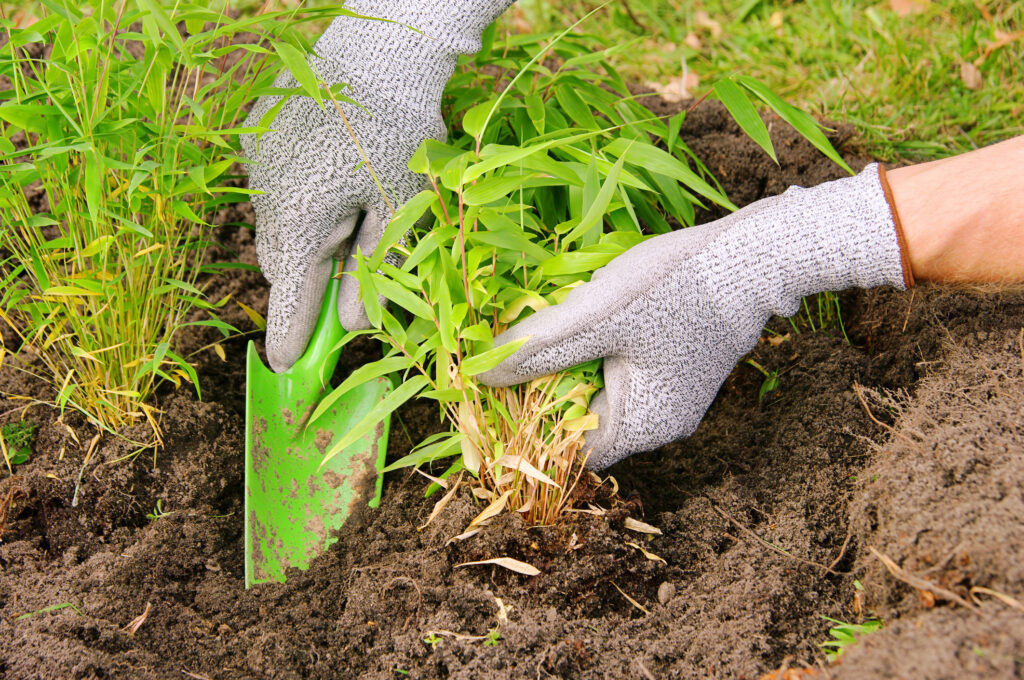
If you want to grow bamboo in a small space, some varieties are clumping and do not grow very large.
©iStock.com/LianeM
With over a thousand species, bamboo comes in a variety of shapes and sizes, offering an abundance of unique styles and varieties to suit any need.
- Giant timber bamboo: Can grow up to 120 feet tall. It is used for construction projects.
- Dwarf bamboo: Great for landscaping and can be used to create privacy screens.
- Culm bamboo: Has a hollow core. It is used for crafting or weaving due to its strength.
- Golden bamboo: Has beautiful yellow-green shoots.
- Black bamboo: Has deep, dark shoots. It is used to create stunning visual effects in the garden.
- Golden goddess bamboo: It grows yellow-green shoots with a hint of red.
- Fishpole bamboo: It can reach up to 20 feet in height. It makes an excellent privacy screen.
- Timber bamboo: It can reach heights of 40 feet. It is often used for construction.
- Silverstripe bamboo: Grows attractive white-striped shoots.
- Fernleaf bamboo: Has cascading foliage and is great for ground cover.
Thank you for reading! Have some feedback for us? Contact the AZ Animals editorial team.

